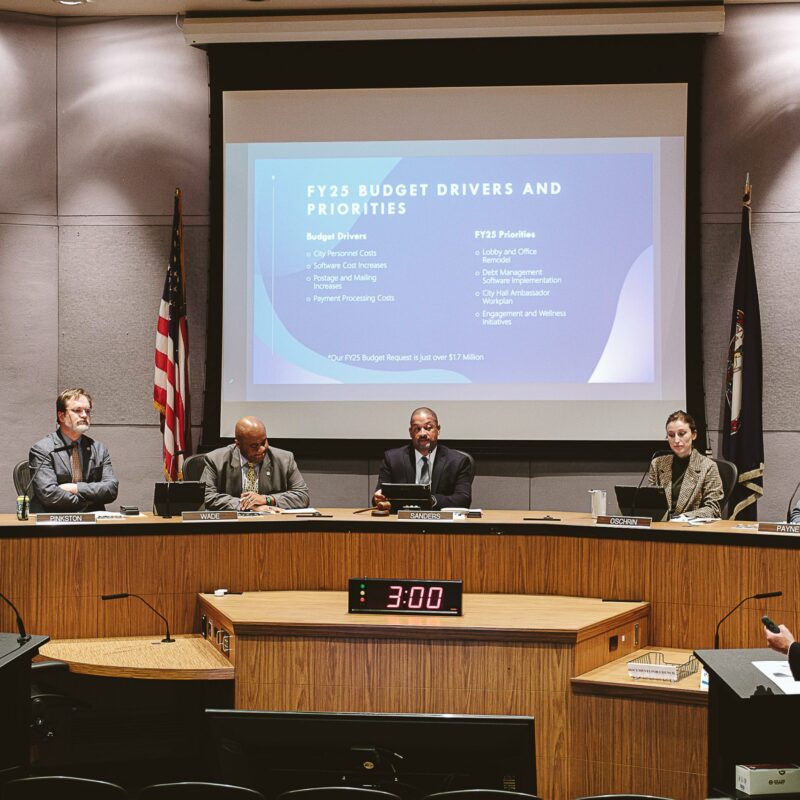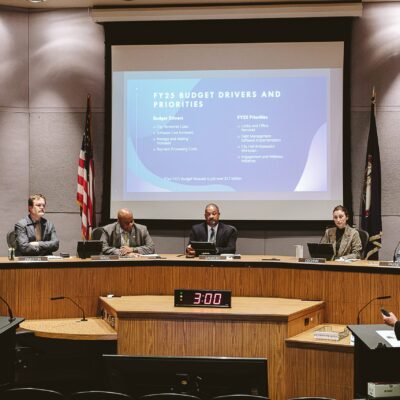If the city won’t build a new dam at Ragged Mountain, then the Rivanna Water and Sewer Authority (RWSA) may have to damn the torpedoes. In an effort to force City Council to “reassess its position and hopefully recommit to the 2006 approved Water Supply Plan,” John Martin wrote a letter to the Department of Conservation and Recreation (DCR) and asked that DCR deny the RWSA’s temporary operating permit for the Ragged Mountain dams unless the city changes its course. Permits expire on November 30, and the DCR’s Virginia Soil and Water Conservation Board meets November 18—a meeting Martin asked to attend.
Martin resigned from the Albemarle County Service Authority (ACSA) in September, after City Council voted unaninimously to “readopt and reaffirm its prior June 2, 2008 approval of the local Water Supply Plan”—with modifications that some criticize as a new plan. He writes that the city is concerned the 2006 plan “provides too much additional water capacity and is too expensive,” and argues that council’s move is an effort to regulate county growth by denying additional water capacity.
In May, Schnabel Engineering proposed the construction of an earthen dam, and RWSA Executive Director Tom Frederick put cost estimates between $28 and $36 million. Within the next week, Charlottesville hired engineering firm Black & Veatch to study the costs and feasibility of repairing the existing Lower Ragged Mountain Dam, built in 1908. By September, City Council approved the modified plans, which include hydraulic dredging of the South Fork Rivanna Reservoir and the phased construction of the dam—either by adding to the existing structure or building a new earthen dam, to a height of 42′.
Council proposed that the first phase of the dam raise the current height by 13′; Black & Veatch estimated that such an increase to the existing dam could cost between $8.8 million and $12 million. The estimated cost for minimal dam repairs—namely, expanding the dam’s spillway—falls between $5.5 million and $7.4 million.
Maurice Jones, acting city manager and RWSA board member, says he has a “great deal of respect” for Martin, but disagrees with his approach and adds that the city has no plans to reassess its position before the November 18 meeting.
“There is agreement on roughly 80 percent of the 2006 plan, and there has been progress,” says Jones via e-mail. In the meantime, the RWSA sent questions about phased dam construction to the Department of Environmental Quality, and an expert panel will review Black & Veatch’s study of the Lower Ragged Mountain Dam on November 22 and 23.
“Because of that progress, there appears to be no logical reason for a denial of the temporary operating permits,” says Jones.
Recent reports put RWSA reserves at $7.1 million, which some believe could be used to repair the dam’s spillway. “As far as I know, it certainly could be used to repair the spillway, but that is not the Council’s position,” says Jones.
If the state revokes RWSA’s operating permit for the Ragged Mountain dams, Mayor Dave Norris, also a member of the RWSA board, says Martin shouldn’t assume the city will resign itself to building a “massive new dam.”
“In fact, given the size and scale, complexity and cost…it would make much more sense to simply go in and fix the spillway,” says Norris. However, “it would be an unfortunate use of several million dollars to do that, because that’s money that’s essentially going down a hole if we ever want to expand that dam.”
On October 21, the Albemarle County Service Authority agreed to pay Schnabel $869,000 for the final design of a new earthen dam. ACSA board member Liz Palmer says Martin’s letter points out a disconnect between the county’s efforts to comply with DCR’s Dam Safety team and the RWSA’s inability to move ahead with a unanimously beloved water supply plan.
“Everyone here can see the disconnect,” says Palmer via e-mail. “Mr. Martin is making sure that DCR knows what is going on in our community. That’s a good thing.” As for whether the move is an attempt to regulate growth in the county, Palmer says a body “can’t stop growth by squeezing the water supply.”
“We are required by the state to design and implement storage facilities as we approach the limits of our capacity,” says Palmer. “When rivers and people compete, people win. It is that simple.”





